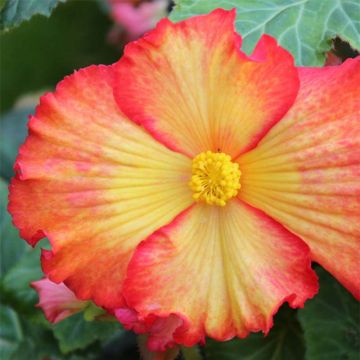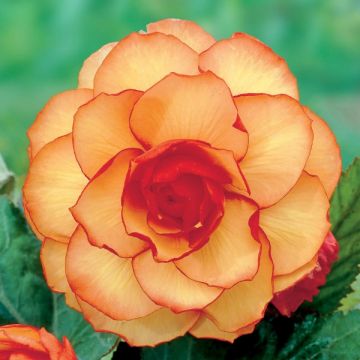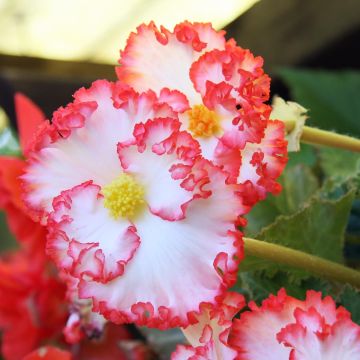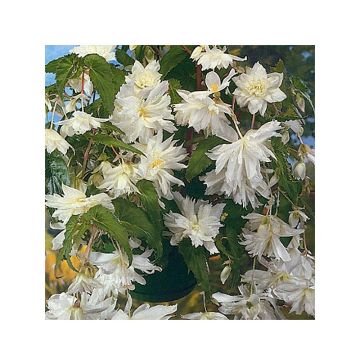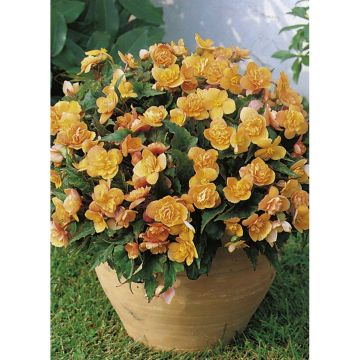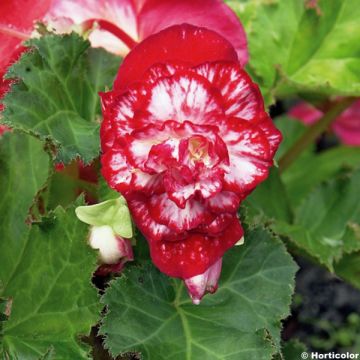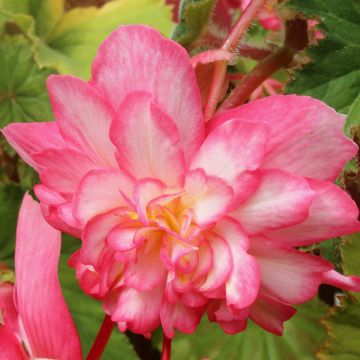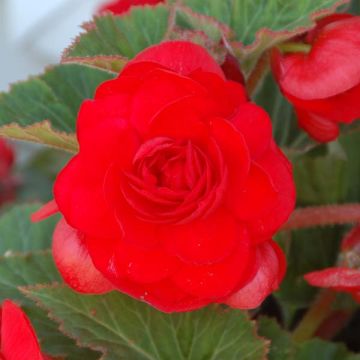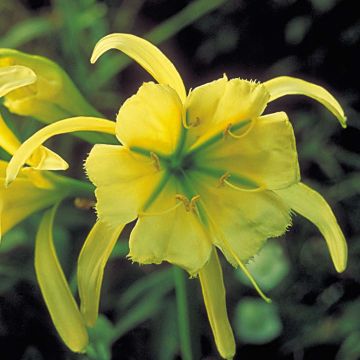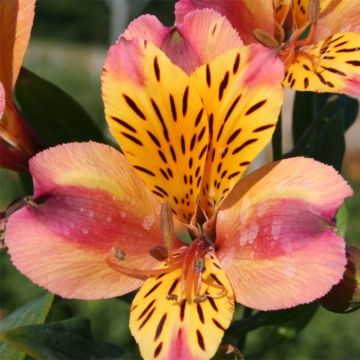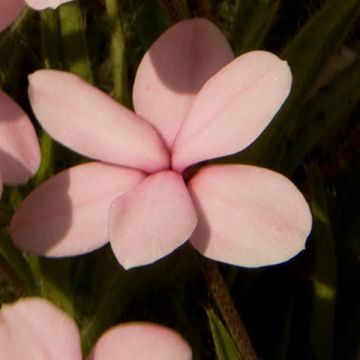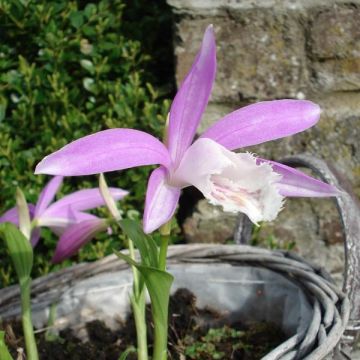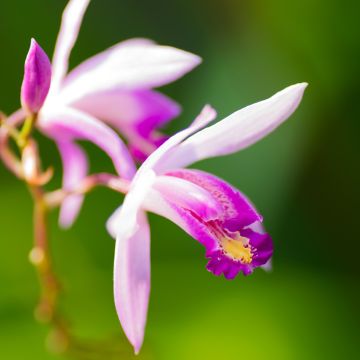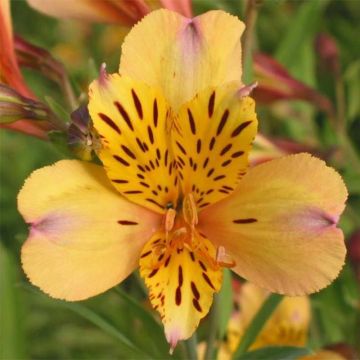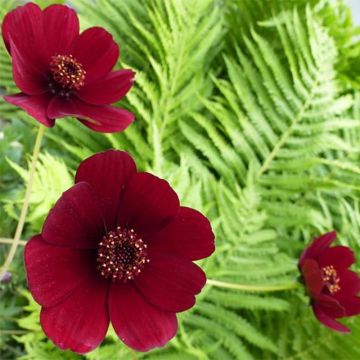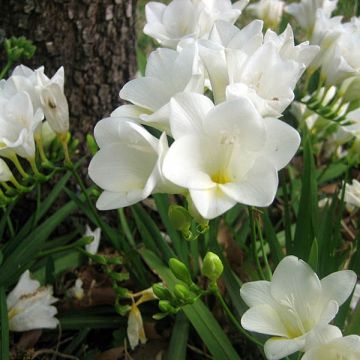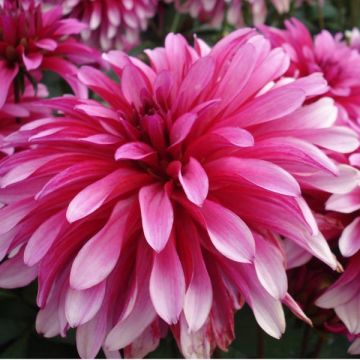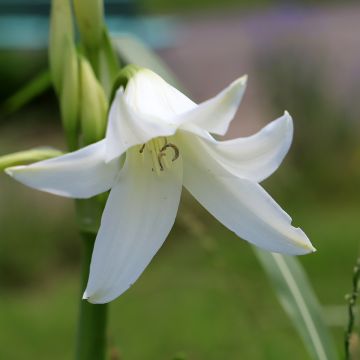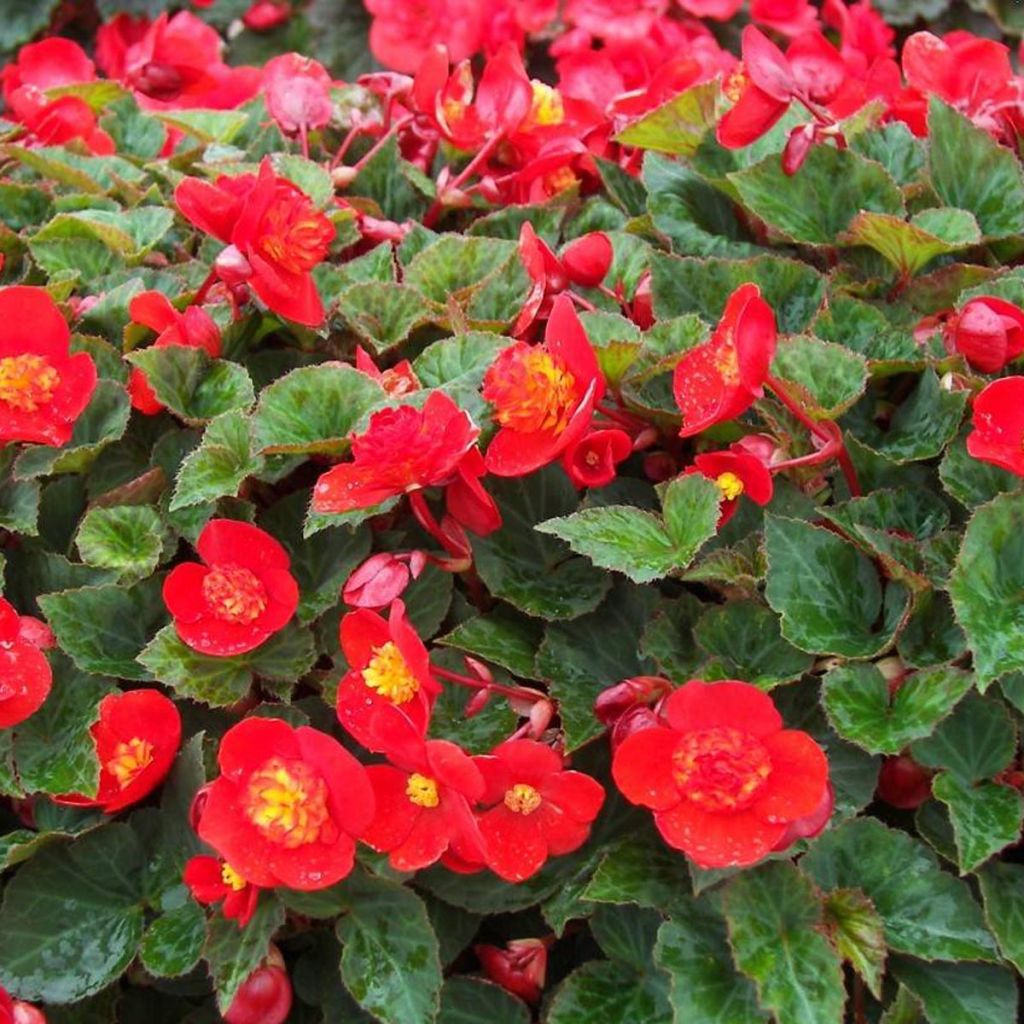

Begonia multiflora Flamboyant
Begonia multiflora Flamboyant
Begonia multiflora Flamboyant
Begonia
Out of the 3 bulbs ordered and received, the largest one measures 4 cm (2in) in diameter, which falls within the advertised size range (2.5 to 5), but the other two are only 2 cm (1in). I wonder what I can expect from them...
Bernard, 05/05/2019
This item cannot be shipped to the selected country
Delivery charge from €5.90
More information
Schedule delivery date,
and select date in basket
This plant carries a 6 months recovery warranty
More information
We guarantee the quality of our plants for a full growing cycle, and will replace at our expense any plant that fails to recover under normal climatic and planting conditions.
From €5.90 for pickup delivery and €6.90 for home delivery
Express home delivery from €8.90.
Does this plant fit my garden?
Set up your Plantfit profile →
Description
We are witnessing the revival of one of the first hybrid varieties with the 'Flamboyant' Begonia multiflora. It is quite similar to the original Begonias as discovered in the Andes in Peru and Bolivia in the late 19th century.
Begonias belong to the Begoniaceae family and can be tuberous or rhizomatous. Native to intertropical rainforests, they mainly come from South America but also from Africa or Asia. To put it simply, rhizomatous Begonias are those that continuously grow in the forest and do not experience a dry season. Tuberous Begonias, on the other hand, live in the same areas but at higher altitudes on slightly brighter sites and experience a dry season, causing them to lose their leaves. This is the time for them to produce fruits and replenish their nutrient reserves.
The 'Flamboyant' Begonia multiflora belongs to the category of tuberous plants. It blooms from July to October. It will reach a width of 30cm (12in) and a height of 40cm (16in) at maturity. It inherited the compact habit of its Andean variety ancestor, and it is not trailing. It has deciduous, dark green, alternate, and velvety leaves. The leaf blades are always asymmetrical, and the petioles have stipules at their base. The flower stalks are dark purple. The flowers of this Begonia are a beautiful coral red.
It is a shade plant that will thrive if it gets a few hours of sunlight each day. It appreciates light soils rich in organic matter (well decomposed garden compost) that do not retain moisture. Additionally, it is quite susceptible to powdery mildew and nematodes and requires regular but not excessive watering. Begonias are frost-sensitive, so do not tolerate freezing temperatures. For this reason, it is often grown in containers that can be easily brought indoors to heated greenhouses or under a veranda at the first frost. If it is in the ground, it is time to remove them and store them in a sheltered place until the following spring. In the meantime, it will pair very well with the Trailing Pink 'Belleconia' Begonia, its more modern alter ego, or beautiful orange or red Cannas.
Report an error about the product description
Plant habit
Flowering
Foliage
Botanical data
Begonia
multiflora
Flamboyant
Begoniaceae
Begonia
Cultivar or hybrid
Other Begonias
Planting and care
Plant your 'Flamboyant' Begonia multiflora in a shady or slightly sunny location, in light and moist soil rich in humus. Begonias dislike heavy soils, so lighten it if necessary with some sand. Plant after the last frost, one per pot of about twenty cm, or spaced 25cm (10in) apart in open ground. Position the tubercle with the concave (hollow) part facing upwards and cover with 5cm (2in) of soil. Like Dahlias, you can speed up their cycle by planting them as early as February, in pots, kept sheltered, and taking them out in May. Water regularly. Apply begonia fertilizer at planting, then twice a month during the season. Remove faded flowers. Dig up the bulbs before the first frost, and store them in a little turf, in a dry and cool place, during winter.
Planting period
Intended location
Care
-
, onOrder confirmed
Reply from on Promesse de fleurs
Bulbs to grow in pots
Haven't found what you were looking for?
Hardiness is the lowest winter temperature a plant can endure without suffering serious damage or even dying. However, hardiness is affected by location (a sheltered area, such as a patio), protection (winter cover) and soil type (hardiness is improved by well-drained soil).

Photo Sharing Terms & Conditions
In order to encourage gardeners to interact and share their experiences, Promesse de fleurs offers various media enabling content to be uploaded onto its Site - in particular via the ‘Photo sharing’ module.
The User agrees to refrain from:
- Posting any content that is illegal, prejudicial, insulting, racist, inciteful to hatred, revisionist, contrary to public decency, that infringes on privacy or on the privacy rights of third parties, in particular the publicity rights of persons and goods, intellectual property rights, or the right to privacy.
- Submitting content on behalf of a third party;
- Impersonate the identity of a third party and/or publish any personal information about a third party;
In general, the User undertakes to refrain from any unethical behaviour.
All Content (in particular text, comments, files, images, photos, videos, creative works, etc.), which may be subject to property or intellectual property rights, image or other private rights, shall remain the property of the User, subject to the limited rights granted by the terms of the licence granted by Promesse de fleurs as stated below. Users are at liberty to publish or not to publish such Content on the Site, notably via the ‘Photo Sharing’ facility, and accept that this Content shall be made public and freely accessible, notably on the Internet.
Users further acknowledge, undertake to have ,and guarantee that they hold all necessary rights and permissions to publish such material on the Site, in particular with regard to the legislation in force pertaining to any privacy, property, intellectual property, image, or contractual rights, or rights of any other nature. By publishing such Content on the Site, Users acknowledge accepting full liability as publishers of the Content within the meaning of the law, and grant Promesse de fleurs, free of charge, an inclusive, worldwide licence for the said Content for the entire duration of its publication, including all reproduction, representation, up/downloading, displaying, performing, transmission, and storage rights.
Users also grant permission for their name to be linked to the Content and accept that this link may not always be made available.
By engaging in posting material, Users consent to their Content becoming automatically accessible on the Internet, in particular on other sites and/or blogs and/or web pages of the Promesse de fleurs site, including in particular social pages and the Promesse de fleurs catalogue.
Users may secure the removal of entrusted content free of charge by issuing a simple request via our contact form.
The flowering period indicated on our website applies to countries and regions located in USDA zone 8 (France, the United Kingdom, Ireland, the Netherlands, etc.)
It will vary according to where you live:
- In zones 9 to 10 (Italy, Spain, Greece, etc.), flowering will occur about 2 to 4 weeks earlier.
- In zones 6 to 7 (Germany, Poland, Slovenia, and lower mountainous regions), flowering will be delayed by 2 to 3 weeks.
- In zone 5 (Central Europe, Scandinavia), blooming will be delayed by 3 to 5 weeks.
In temperate climates, pruning of spring-flowering shrubs (forsythia, spireas, etc.) should be done just after flowering.
Pruning of summer-flowering shrubs (Indian Lilac, Perovskia, etc.) can be done in winter or spring.
In cold regions as well as with frost-sensitive plants, avoid pruning too early when severe frosts may still occur.
The planting period indicated on our website applies to countries and regions located in USDA zone 8 (France, United Kingdom, Ireland, Netherlands).
It will vary according to where you live:
- In Mediterranean zones (Marseille, Madrid, Milan, etc.), autumn and winter are the best planting periods.
- In continental zones (Strasbourg, Munich, Vienna, etc.), delay planting by 2 to 3 weeks in spring and bring it forward by 2 to 4 weeks in autumn.
- In mountainous regions (the Alps, Pyrenees, Carpathians, etc.), it is best to plant in late spring (May-June) or late summer (August-September).
The harvesting period indicated on our website applies to countries and regions in USDA zone 8 (France, England, Ireland, the Netherlands).
In colder areas (Scandinavia, Poland, Austria...) fruit and vegetable harvests are likely to be delayed by 3-4 weeks.
In warmer areas (Italy, Spain, Greece, etc.), harvesting will probably take place earlier, depending on weather conditions.
The sowing periods indicated on our website apply to countries and regions within USDA Zone 8 (France, UK, Ireland, Netherlands).
In colder areas (Scandinavia, Poland, Austria...), delay any outdoor sowing by 3-4 weeks, or sow under glass.
In warmer climes (Italy, Spain, Greece, etc.), bring outdoor sowing forward by a few weeks.

































